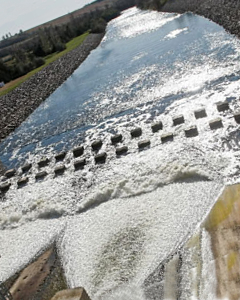Ancient lift outlined
 French archaeologists have proposed a new theory for how Egypt's oldest pyramid was constructed.
French archaeologists have proposed a new theory for how Egypt's oldest pyramid was constructed.
The researchers suggest that a hydraulic lift system using water could have been employed to elevate the massive stone blocks that comprise the Pyramid of Djoser into place.
The pyramid, also known as the Step Pyramid, was built approximately 4,550 years ago for the Third Dynasty pharaoh Djoser.
Despite extensive study, the exact methods used to construct the pyramid have remained a topic of debate.
The new analysis published in the journal PLOS ONE, offers a fresh perspective on the engineering marvels of ancient Egypt.
The research team, led by Xavier Landreau from the CEA Paleotechnic Institute in France, posits that a nearby structure known as the Gisr el-Mudir enclosure, previously unexplained, may have functioned as a dam.
This dam would have captured and directed water towards the pyramid.
Additionally, the researchers identified a series of compartments outside the pyramid, suggesting they were part of a water treatment facility.
As water passed through these compartments, sediment would settle, allowing cleaner water to be utilised in the construction process.
The study suggests that water could have been channelled into two shafts within the pyramid.
The force of the rising water in these shafts could have lifted a float carrying the heavy building stones.
This use of hydraulic technology would have significantly aided in the construction of the pyramid, reducing the reliance on manpower and traditional ramp methods.
While this theory provides a plausible explanation, further research is needed to determine the specifics of water flow through the shafts and the availability of water in the region during the pyramid's construction.
The researchers acknowledge that other methods, such as ramps, were likely also used but believe the hydraulic lift system played a crucial supporting role.
“A collaborative effort between the newly established research institute, Paleotechnic, and several national laboratories (INRAE, University of Orléans) has led to the discovery of a dam, a water treatment facility, and a hydraulic elevator, which would have enabled the construction of the Step Pyramid of Saqqara,” the researchers stated.
“This work opens a new research line for the scientific community: the use of hydraulic power to build the pyramids of Egypt.”








 Print
Print